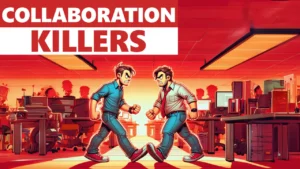For many new developers, trying to choose a programming language is one of the greatest roadblocks they face initially. And then, of course, the next pressing question arises shortly after: How many languages should I learn at once? Because if one is good, surely more is better… right?
This decision, rooted in the broader discussion of specialization versus diversification, has implications for their professional development, job opportunities, and the projects they might work on. But it’s also going to impact their ability to learn initially. Making an informed choice between these two paths requires an understanding of the advantages and challenges of each. This guide aims to provide clarity on this topic, helping junior developers navigate their early career decisions.
The Beginner’s Dilemma: Ease of Learning and Initial Barriers
The Learning Curve of Specialization
Every programming language or tech stack comes with its own set of challenges and intricacies. For those who choose to specialize, the initial learning curve can be steep. This is especially true if the chosen language has a high level of complexity or a unique syntax. When you ask yourself, “How many languages should I learn at once?”, you’ll want to keep this in mind.
However, the silver lining is that by focusing on one language, a beginner can gain a deep understanding of core programming concepts. These foundational skills often become transferable when transitioning to other languages. On the flip side, there’s a risk: if the chosen language is particularly challenging, it might lead to early frustration or even determent from continuing the coding journey.
To help navigate some of these challenges, I generally recommend that beginners go down a path that’s aligned with what they want to build. And this point is reinforced when I suggest that you build projects to learn how to code.
Diversification: A Gentle Introduction?
Exploring multiple languages or tech stacks can be likened to tasting a buffet before deciding on a main course. This approach allows beginners to get a feel for different programming paradigms, syntaxes, and use cases. It can be an excellent way to discover which language aligns best with an individual’s learning style or career goals.
However, there’s a caveat: By spreading focus across multiple areas, one might not delve deep enough into any particular language to achieve a level of proficiency that feels satisfactory or marketable.
Resources and Community Support
One of the most significant factors influencing the ease of learning is the availability of resources. Some languages, due to their popularity or longevity, have vast repositories of tutorials, documentation, and community-driven content.
For instance, Python is often lauded for its extensive documentation and beginner-friendly syntax. New developers should consider the strength and accessibility of a language’s community and resources when deciding on a learning path.
On the flip side, languages like C have been around for ages and many would suggest that something like C would be excellent for learning coding principles. However, if you compare Python communities and resources to those of C, you’ll see a stark difference.
Setting Realistic Expectations
Regardless of the approach—whether specialization or diversification—it’s crucial for beginners to set realistic expectations. Learning to code is a marathon, not a sprint. It’s essential to be patient, persistent, and open to continuous learning. When I speak with junior developers, it’s often clear that their expectations for timelines for being a very effective developer are skewed. Grounding in reality is helpful and necessary to avoid being discouraged!
Engaging with the broader developer community, seeking mentorship, or joining coding groups can provide invaluable support. These networks can offer guidance, answer questions, and provide encouragement during those inevitable moments of doubt or challenge. In fact, I was inspired to write this post because of new programmers joining communities and spamming things like “How many languages should I learn at once?”.
The Case for Mastery: Becoming an Expert
Depth Over Breadth
There can be a significant advantage to being a master of one rather than a jack-of-all-trades. By dedicating time and effort to deeply understand a single language or tech stack, developers can gain insights that are often missed by those who skim the surface. So one end of the spectrum when asking “How many languages should I learn at once?” is to double down in one specific area.
This depth of knowledge not only provides a comprehensive understanding of the nuances and intricacies of the language but also positions the developer as an expert in that domain. Such expertise is invaluable in projects that require deep technical knowledge and can lead to recognition as a go-to authority on the subject.
Market Demand for Specialists
While generalists are valued for their versatility, there’s a robust market demand for specialists. Certain industries, such as finance or healthcare, often require deep technical expertise due to the complexity of their systems. Companies in these sectors are willing to invest in specialists who can navigate these complexities with ease.
Furthermore, specialists often command higher salaries due to their unique skill sets. They may also find opportunities in niche areas that are not accessible to generalists. Of course, not all options are equal. So becoming a specialist in a domain or tech stack that has many other specialists may not work quite as well.
Faster Problem Solving
One of the most tangible benefits of mastery is the ability to solve problems more efficiently. With a deep understanding of a language or tech stack, developers can quickly identify issues, understand their root causes, and implement solutions. This efficiency is not just about speed; it’s also about the quality of solutions, ensuring that they are robust and sustainable.
Potential Drawbacks
However, mastery does come with its set of challenges. There’s always the risk that the chosen technology might become obsolete or be replaced by newer, more efficient solutions. Specialists might also find themselves pigeonholed into specific roles or projects, limiting their exposure to other exciting opportunities. It’s essential to strike a balance, continuously updating one’s skills while being open to learning about broader industry trends.
The Case for Diversification: Being a Jack of All Trades
Versatility in the Job Market
Diversifying one’s skill set can open doors to a wide range of opportunities in the job market. With knowledge in multiple languages or tech stacks, developers can position themselves as versatile assets, capable of wearing many hats. Here, we have the other end of the spectrum when asking “How many languages should I learn at once?” – go wide instead of deep.
This adaptability is especially valuable in startups and smaller companies where resources might be limited, and employees are often expected to handle a variety of tasks. By being able to jump into different roles and address diverse tech challenges, developers with a broad skill set can be invaluable to such organizations.
Broad Perspective on Problem Solving
Having experience with different technologies provides a unique vantage point when approaching problems. A developer familiar with multiple tech stacks can draw from a wide range of solutions and methodologies, leading to more innovative and often more efficient solutions. This broad perspective can be particularly beneficial when working on interdisciplinary projects or when trying to integrate different systems.
Continuous Learning and Adaptability
One of the joys of diversification is the continuous journey of discovery. With the tech landscape constantly evolving, there’s always something new to learn. Developers who diversify are often more adaptable, ready to pick up a new language or tool as the need arises. This adaptability not only keeps the work exciting but also prepares developers for shifts in the industry, ensuring they remain relevant in their careers.
Potential Drawbacks
However, being a jack of all trades has its challenges. There’s a common perception that someone who knows many things might not be an expert in any particular domain. This perception can sometimes limit opportunities for roles that require deep specialization. Additionally, keeping up with multiple technologies can be time-consuming. Balancing the need to stay updated while also delving deep into specific areas can be a challenging juggling act.
Striking a Balance: Is There a Middle Ground?
In the world of software development, there’s often a debate between diving deep into one technology or spreading one’s wings across multiple platforms and languages. Beginners face this when asking themselves “How many languages should I learn at once?”, but what if there was a way to get the best of both worlds?
The Concept of “T-shaped” Skills
The idea behind “T-shaped” skills is simple yet profound. Imagine the letter ‘T’. The vertical line represents depth of expertise in a single domain, while the horizontal line symbolizes a broader understanding of various areas. This model suggests that a developer can have deep expertise in one particular area (like a specific programming language or platform) while also possessing a general understanding of other related domains.
By adopting a T-shaped skill set, developers can position themselves as specialists in a particular area, making them highly valuable for roles that require deep expertise. At the same time, their broader knowledge equips them to collaborate effectively with teams across different tech domains, bringing versatility to their roles.
Deciding on the Right Approach
Choosing between specialization, diversification, or aiming for a T-shaped skill set largely depends on individual factors:
- Career Goals: If you aspire to be recognized as an authority in a specific domain, deep specialization might be the way to go. On the other hand, if you envision yourself in roles that require a mix of skills, like a tech lead or a solutions architect, a more diversified skill set or a T-shaped profile could be beneficial.
- Interests: Your passion and interest play a significant role. If you’re deeply fascinated by a particular technology, diving deep can be both professionally rewarding and personally fulfilling. Conversely, if you’re someone who loves exploring and learning about various tech stacks, diversification can keep your work exciting.
- Job Market: It’s essential to keep an eye on the job market and industry trends. Some technologies might be in high demand at certain times, making it beneficial to specialize in them. However, the tech industry is ever-evolving, and diversifying can offer some level of security against the obsolescence of a particular technology.
In the end, the journey of learning and growth in the tech world is deeply personal. While it’s essential to be aware of industry trends and demands, it’s equally crucial to align your learning path with your interests and long-term career aspirations.
So… How Many Languages Should I learn At Once?
In the ever-evolving landscape of software development, the decision between specialization and diversification is not one to be taken lightly. It’s a choice that can shape the trajectory of one’s career, influence job opportunities, and even impact personal satisfaction in the work that we do.
For new developers, it’s crucial to take a step back and assess both personal interests and career aspirations. What ignites your passion? Where do you see yourself in the next five or ten years? While the allure of becoming an expert in a niche domain is undeniable, the versatility offered by a broader skill set can be equally enticing.
Keep in mind that the tech industry is dynamic. What’s in demand today might not be tomorrow. Being open to continuous learning and adaptability is key. It’s also worth noting that one’s approach isn’t set in stone. As you grow and evolve in your career, you might find the need to pivot, dive deep into a new technology, or branch out to explore multiple domains.
In conclusion, while industry trends and market demands are essential considerations, aligning one’s learning path with personal interests and long-term goals is paramount. Embrace the journey, stay curious, and remember that the path to mastery is a marathon, not a sprint. You can always change direction and shift gears along the way! Your answer to “How many languages should I learn at once?” may certainly change along the way.


